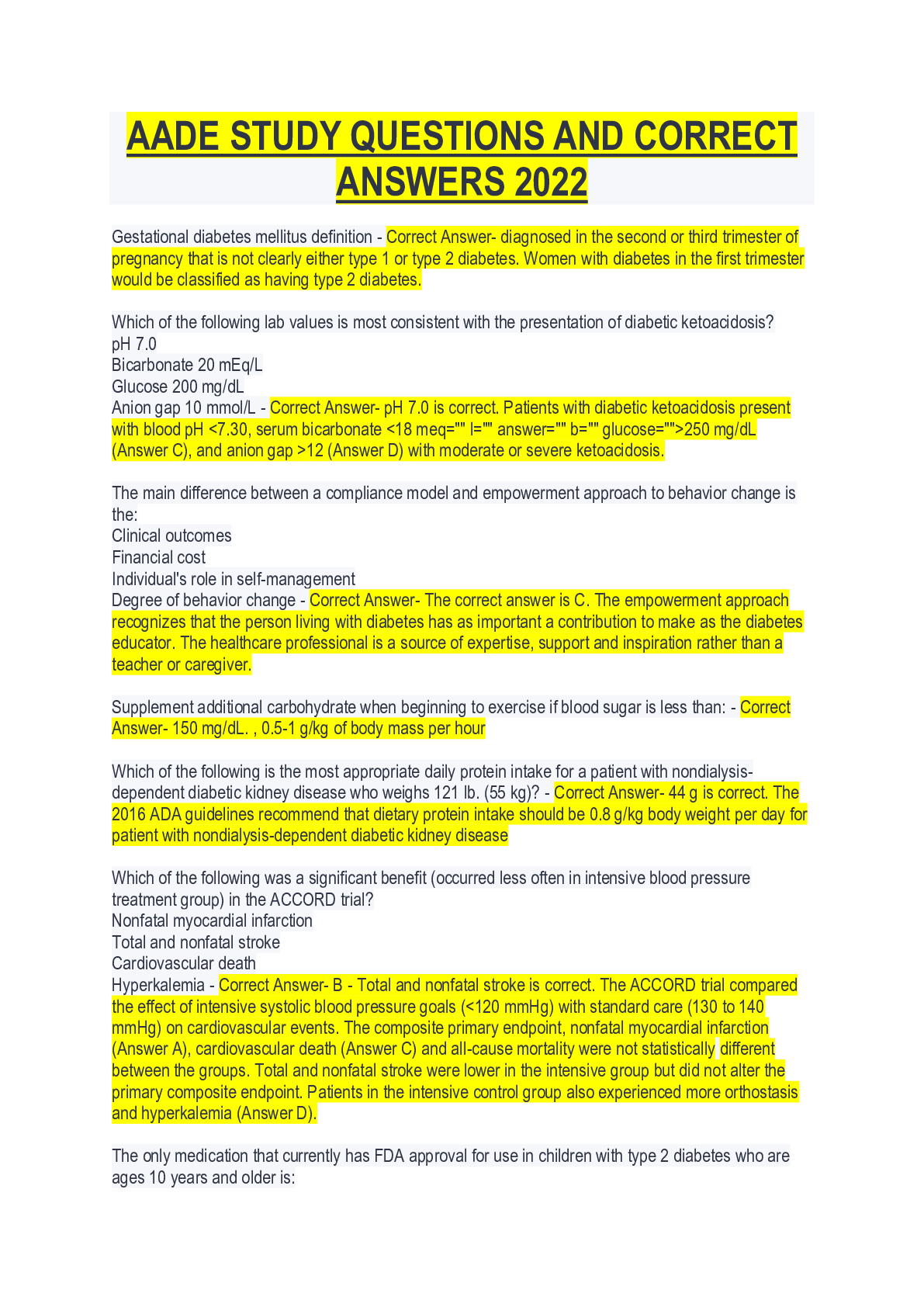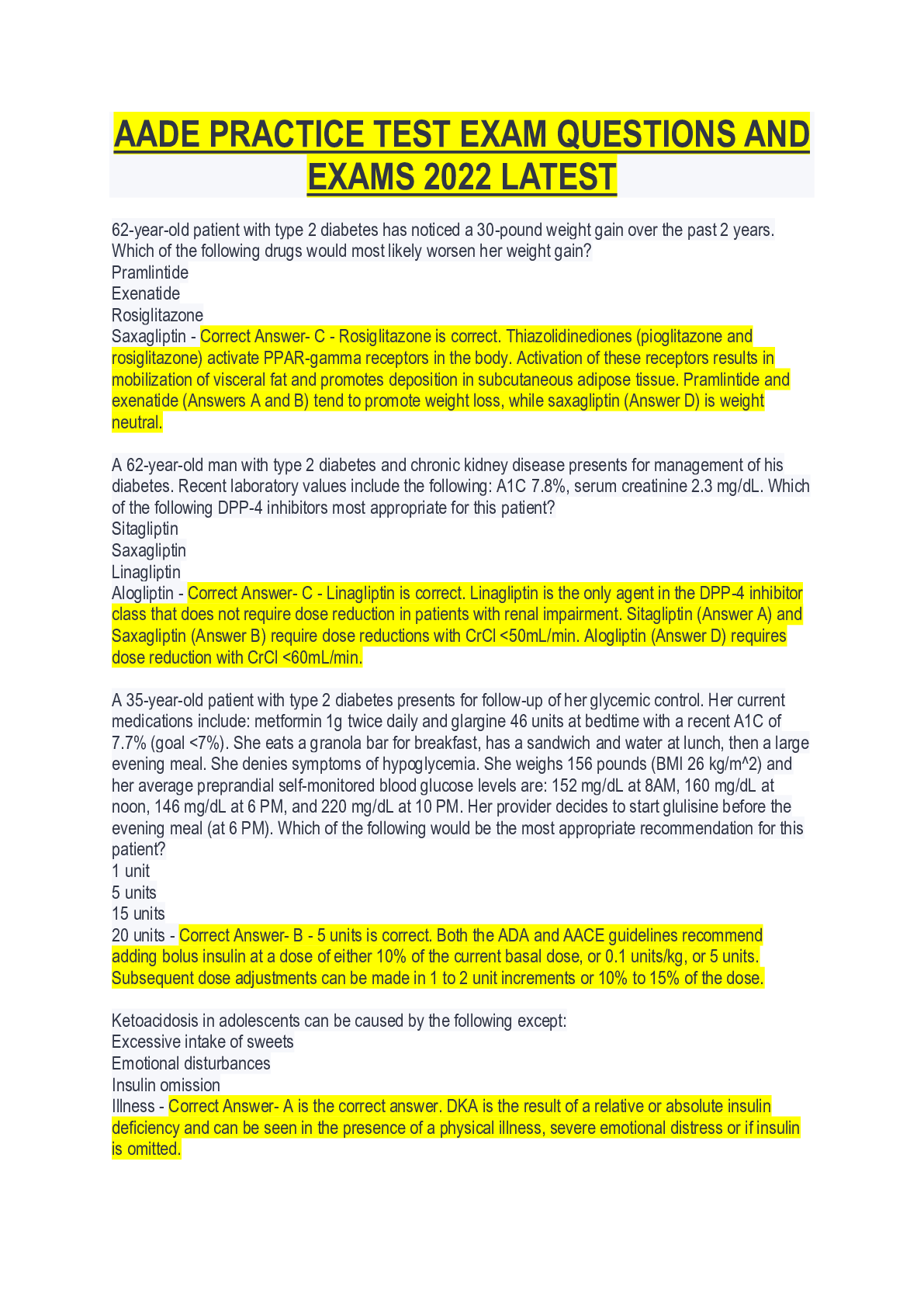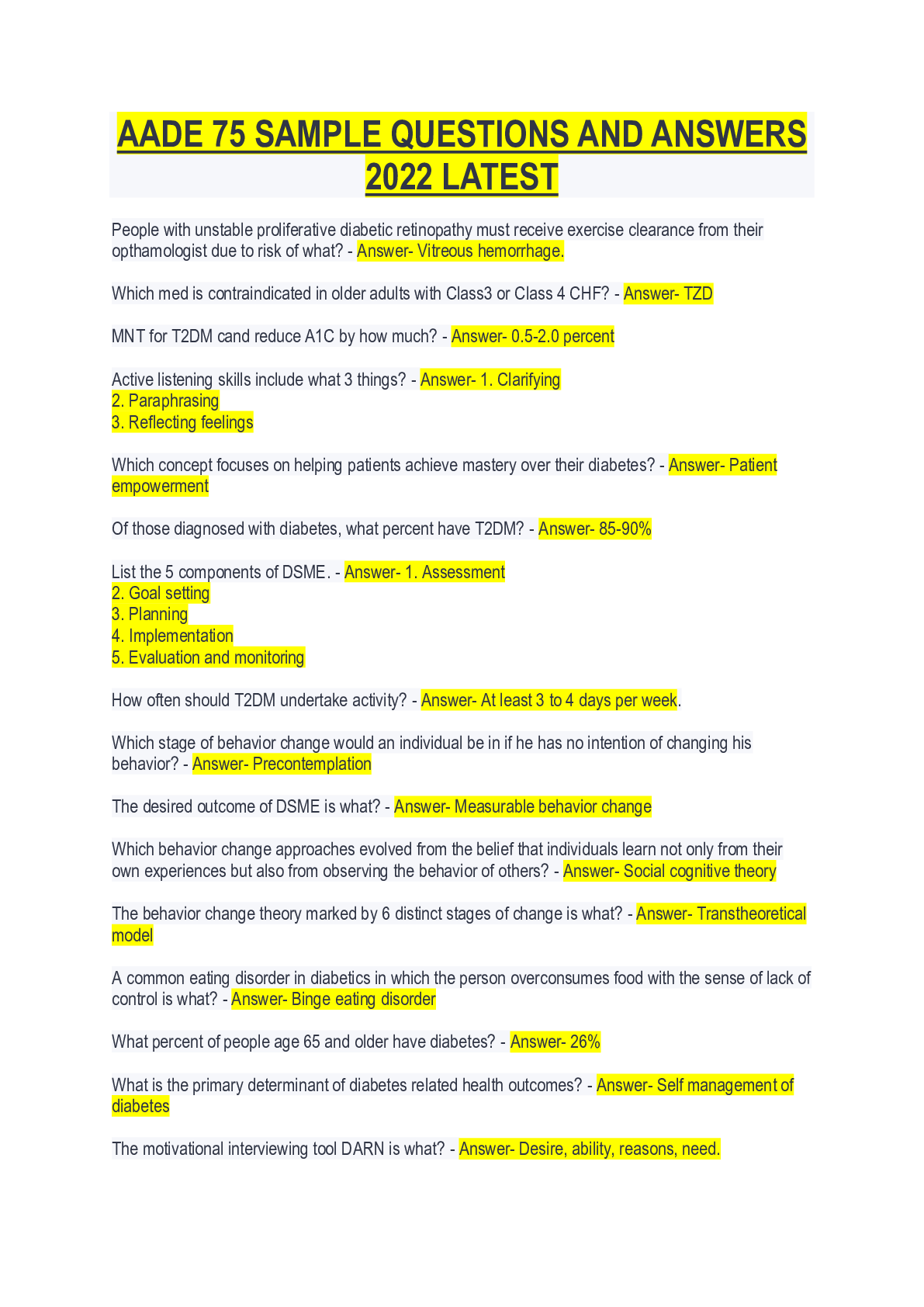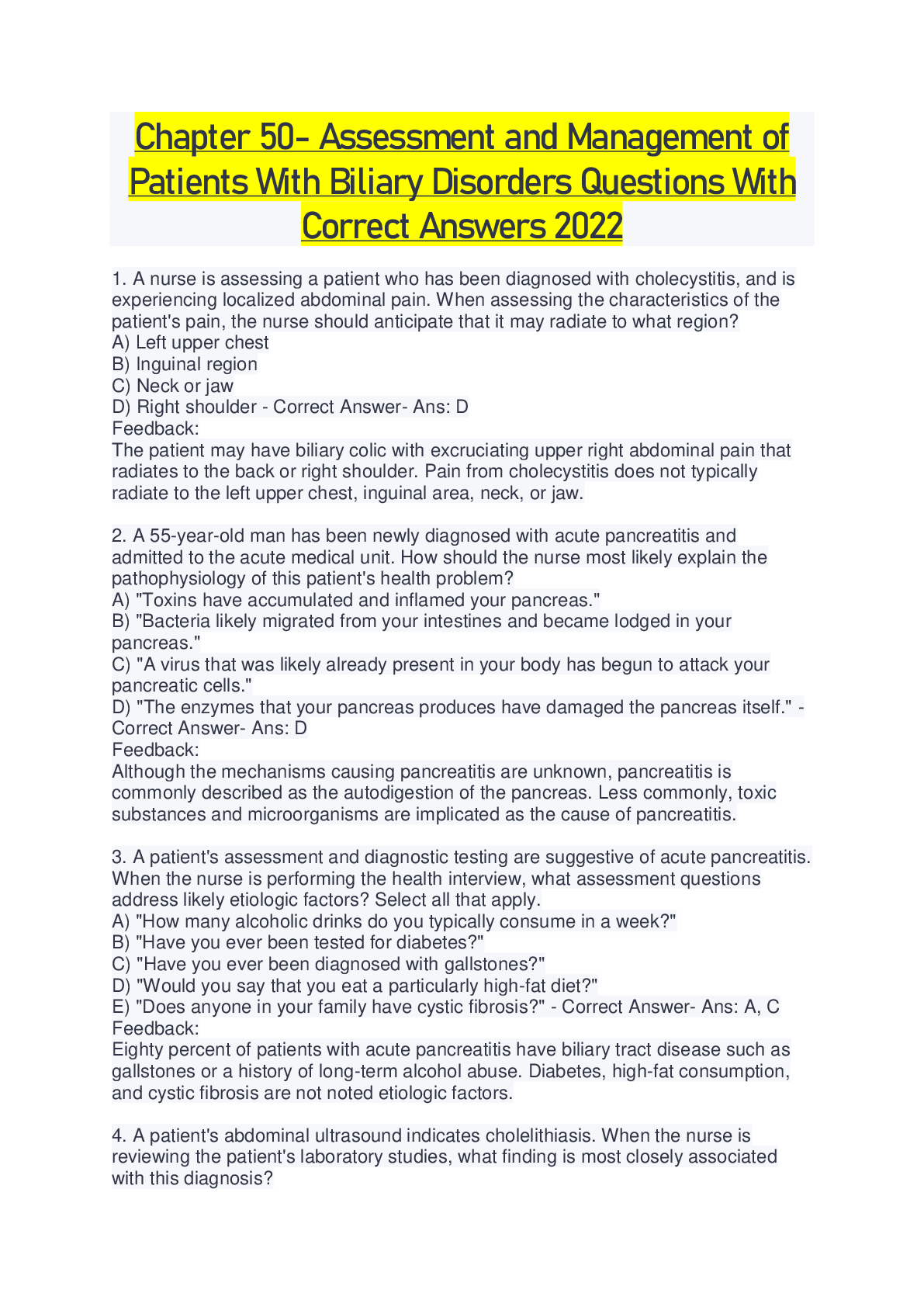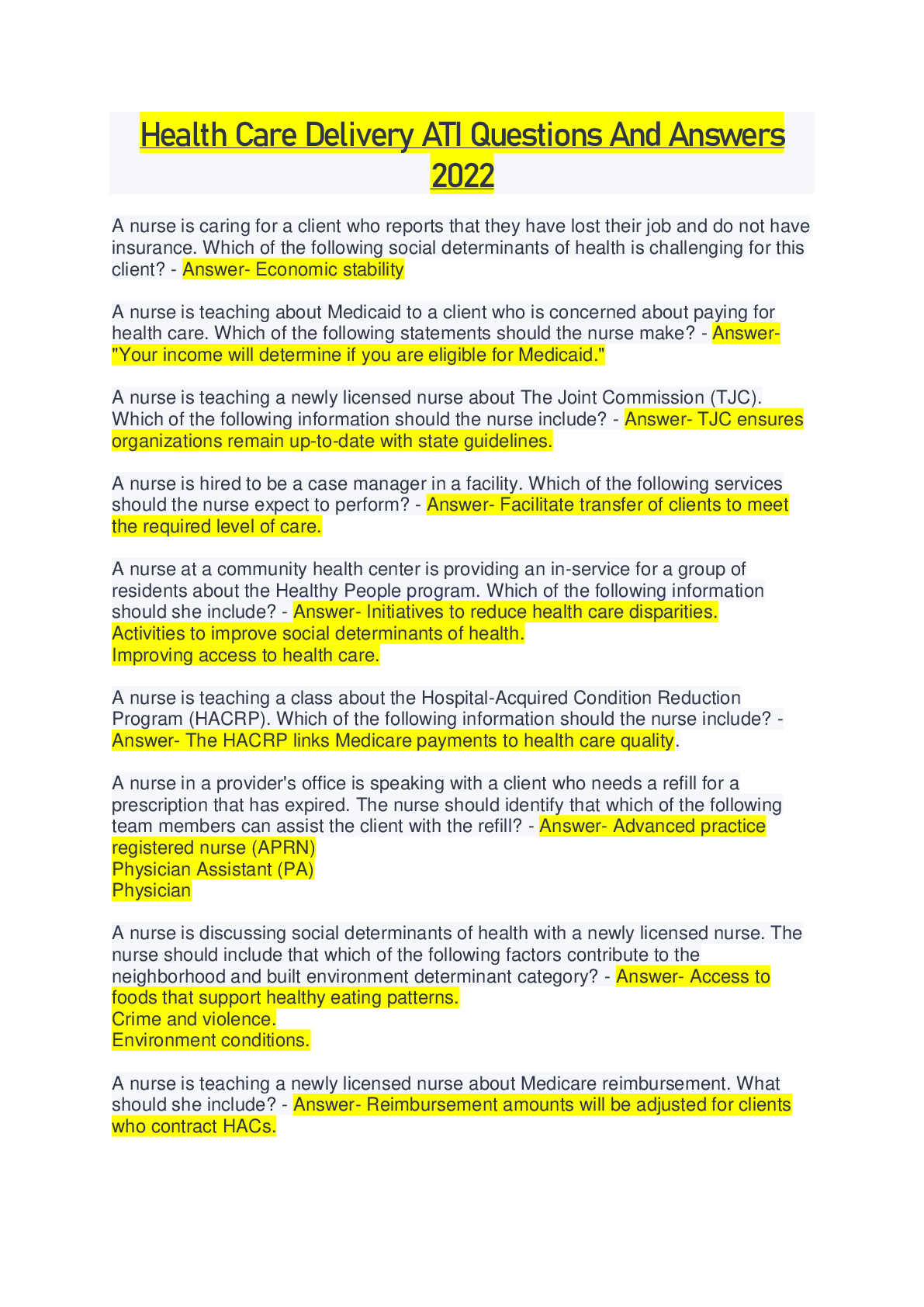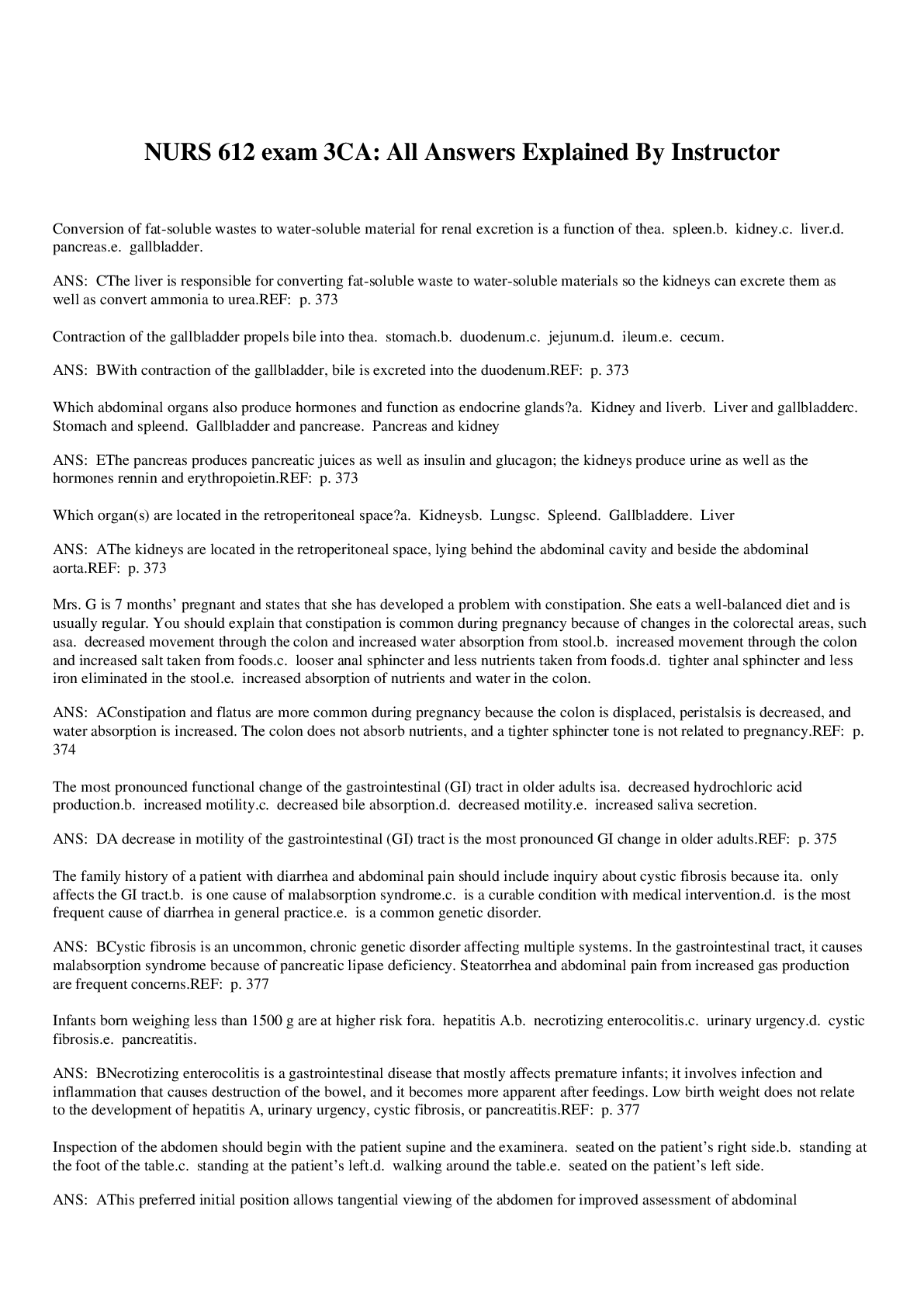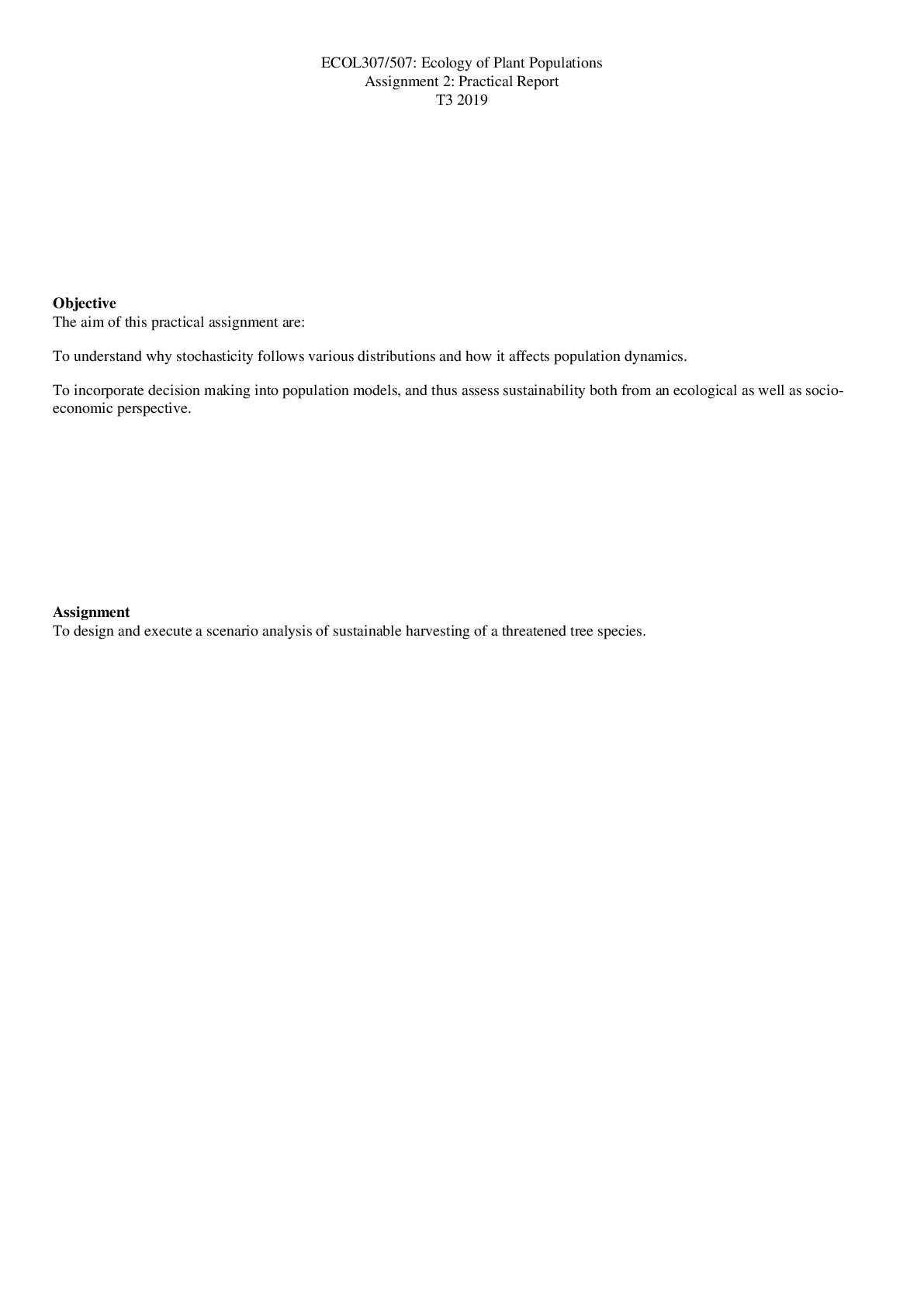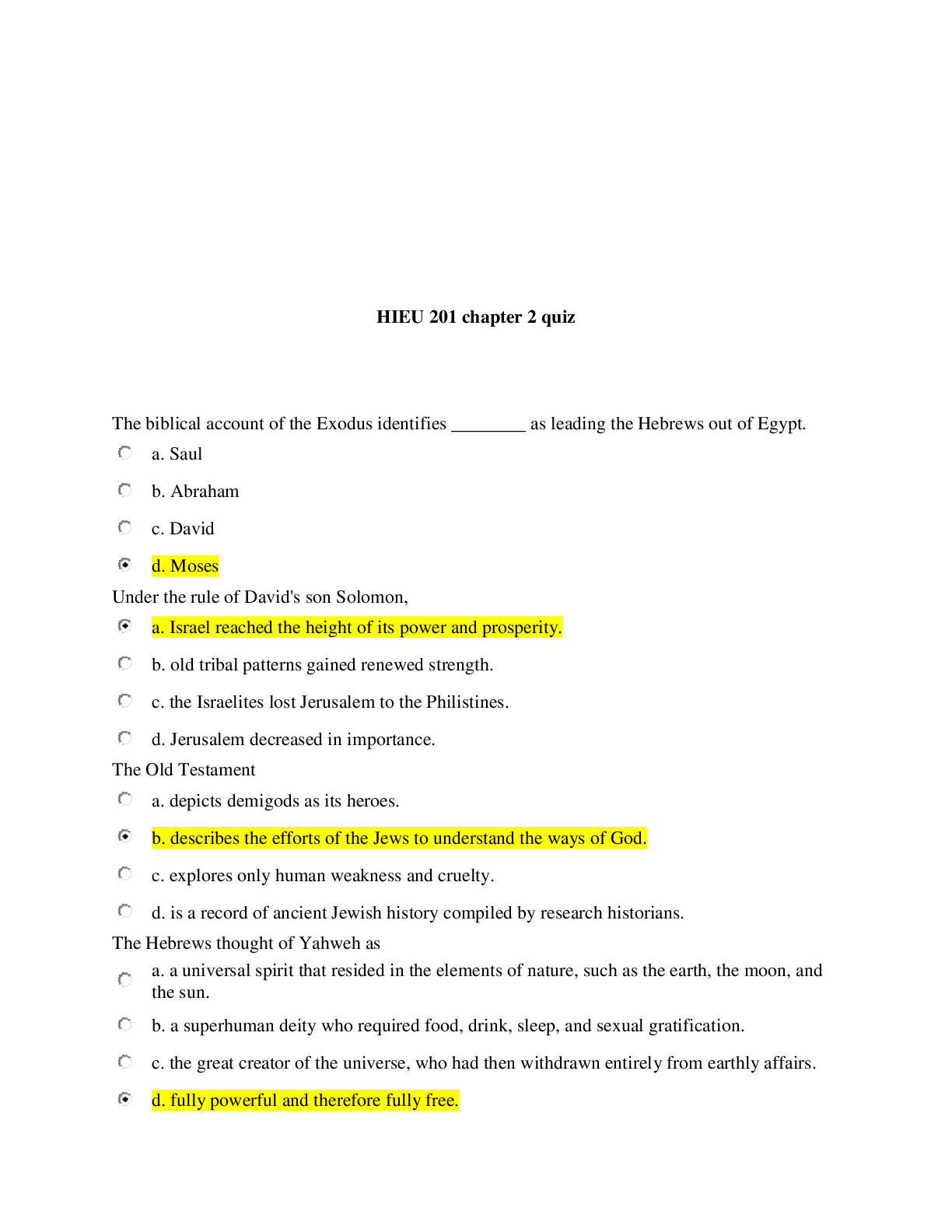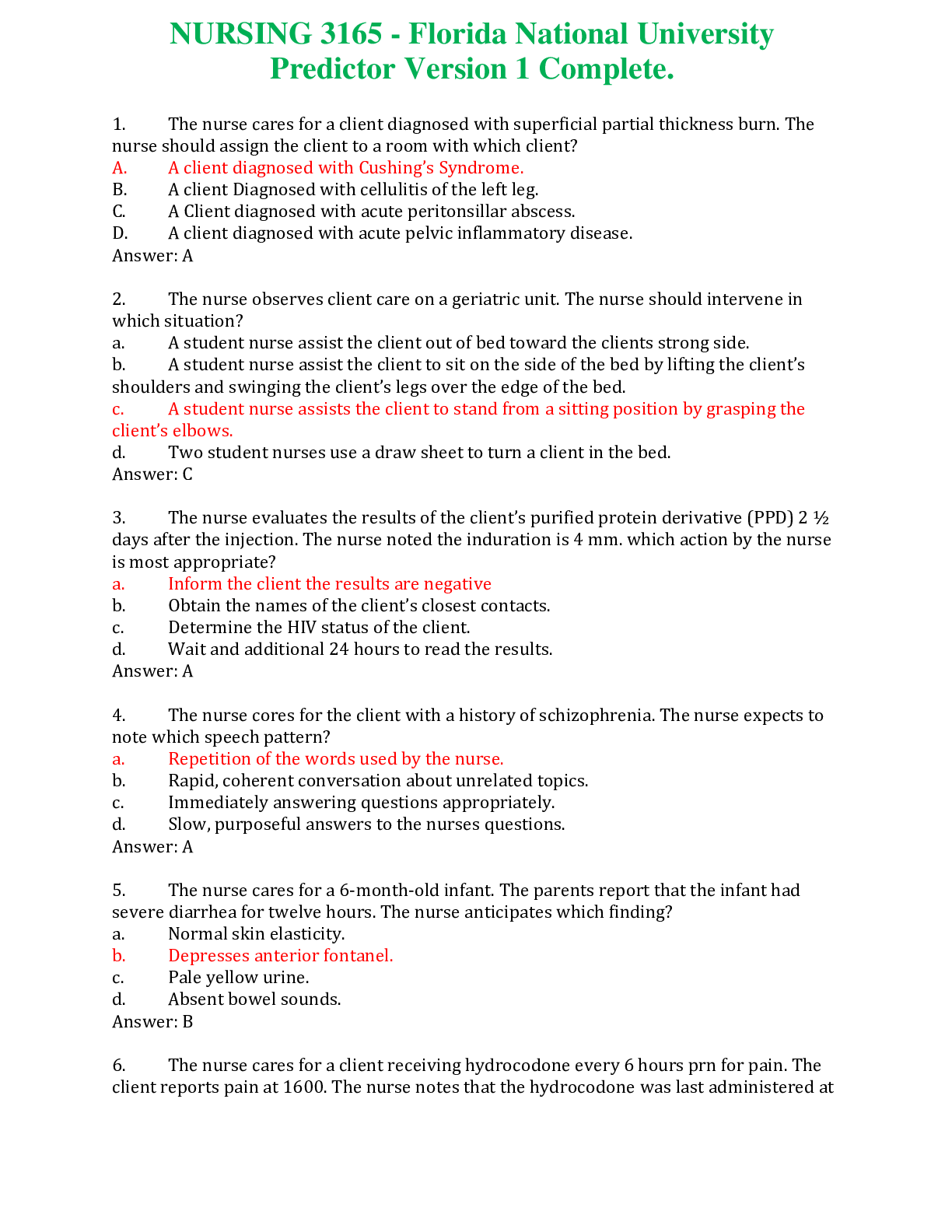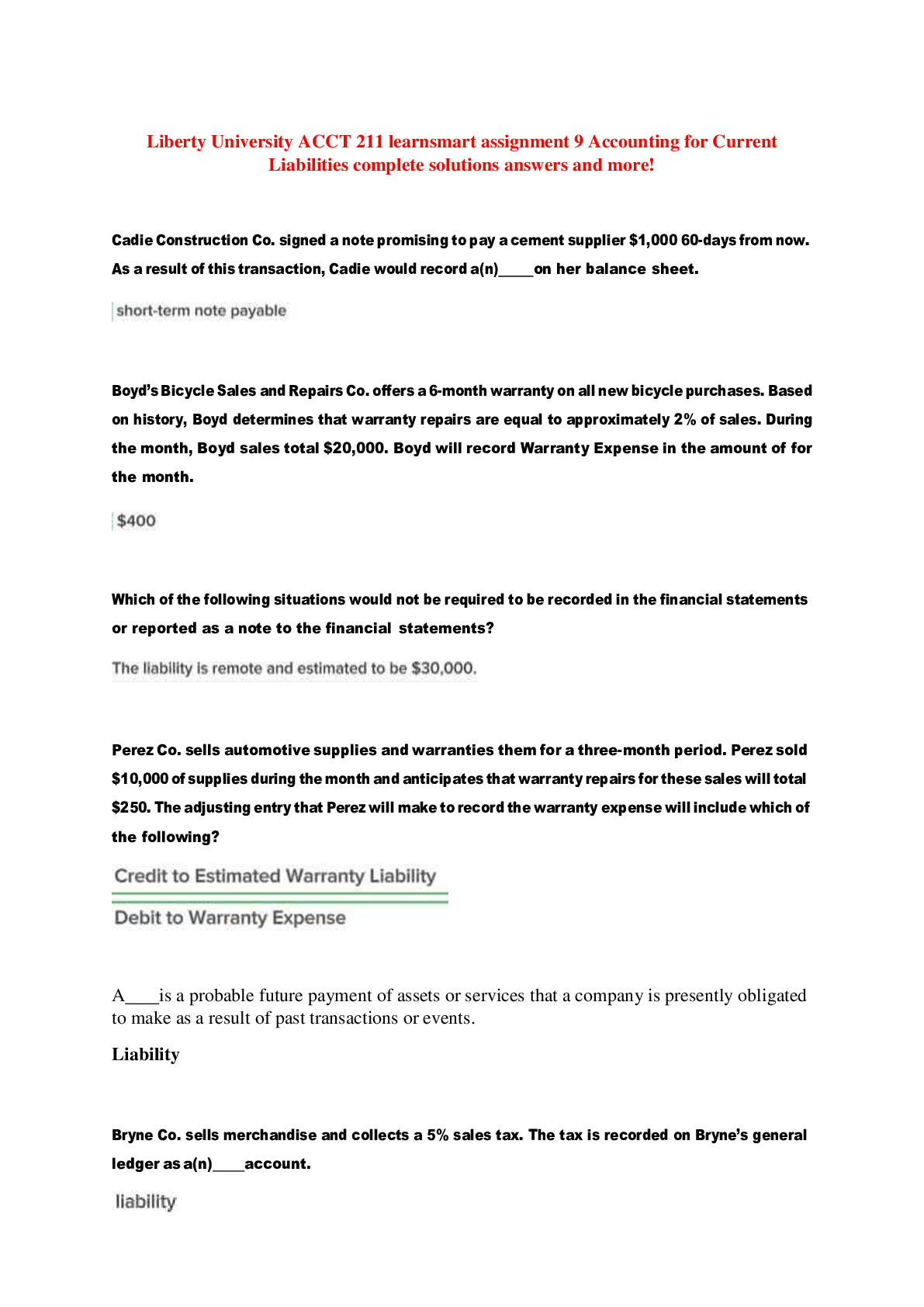Anatomy and Physiology - A&P 1 > QUESTIONS & ANSWERS > HESI Anatomy and Physiology (All)
HESI Anatomy and Physiology
Document Content and Description Below
HESI Anatomy and Physiology 1. Which of the following hormones decreases the concentration of blood glucose? A. insulin B. glucagon C. growth hormone D. glucocorticoids 2. Which structure contro... ls the hormones secreted by the pituitary gland? A. hypothalamus B. adrenal gland C. testes D. pancreas 3. How much of a female’s blood volume is composed of red blood cells? A. 10% B. 25% C. 40% D. 70% 4. Which type of cholesterol is considered to be the best for health? A. LDL B. HDL C. VLDL D. VHDL 5. Where are the vocal cords located? A. bronchi B. trachea 2022 C. larynx D. epiglottis 6. Where does gas exchange occur in the human body? A. alveoli B. bronchi C. larynx D. pharynx 7. What mineral is responsible for muscle contractions? A. Chloride B. Sodium C. Calcium D. Magnesium 8. In which of the following locations would the urinary bladder and internal reproductive organs be found? A. Thoracic cavity B. Mediastinum C. Abdominal cavity D. Pelvic cavity 9. What separates the thoracic cavity from the abdominal cavity? A. Diaphragm B. Mediastinum C. Liver D. Lungs 10. Which of the following epithelial types is correctly matched with its major function? A. Simple squamous epithelium—secretion or absorption B. Stratified squamous epithelium—changes shape when stretched C. Stratified squamous epithelium—diffusion D. Simple columnar epithelium—secretion or absorption 11. A tissue examined under the microscope exhibits the following characteristics: cells found on internal surface of stomach, no extracellular matrix, cells tall and thin, no blood vessels in the tissue. What type of tissue is this? A. Epithelial B. Connective C. Muscle D. Cartilage E. Nervous 12. Nerve tissue is composed of neurons and connective tissue cells that are referred to as which of the following? A. Osteoblasts B. Neuroglia C. Osteocytes D. Arterioles 13. Which tissue serves as the framework of the body by providing support and structure for the organs? A. Epithelial B. Connective C. Nervous D. Muscle 14. What is the basic unit of life and the building block of tissues and organs? A. Atom B. Organelle C. Cell D. DNA 15. What is the exchange of gases between the atmosphere and the blood through the alveoli called? A. External respiration B. Internal respiration C. Inhalation D. Cellular respiration 16. In order for inhalation to occur, what must happen? A. Contraction of the diaphragm, which decreases the volume of the chest cavity and draws air into the lungs B. Contraction of the diaphragm, which enlarges the chest cavity and draws air into the lungs C. Recoil of the lungs as the respiratory muscles contract, and the thorax decreases in size D. Recoil of the lungs as the respiratory muscles relax, and the thorax decreases in size 17. Most of the carbon dioxide in the blood does which of the following? A. It is carried in solution or bound to blood proteins. B. It is carried on hemoglobin. C. It is converted to bicarbonate ions by carbonic anhydrase within red blood cells. D. It is converted to bicarbonate ions by carbonic anhydrase within the plasma. 18. How does the trachea remain open like a hollow tube? A. Air pressure inside keeps it open. B. Supporting cartilaginous rings keep it open. C. It is reinforced with bone that cannot collapse. D. Special muscles are working to keep the trachea open. 19. The stomach muscle churns and mixes food, turning the mass into a soupy substance called which of the following? A. Bolus B. Bile C. Chyme D. Feces 20. Which type of cell division takes place in the gonads? A. Mitosis B. Meiosis C. Binary fission D. Asexual division 21. In what area of the body would you expect to find an especially thick stratum corneum? A. Back of the hand B. Heel of the foot C. Abdomen D. Over the shin 22. Which of the following proteins is produced by cartilage? A. actin B. estrogen C. collagen D. myosin 23. Which component of the nervous system is responsible for lowering the heart rate? A. central nervous system B. sympathetic nervous system C. parasympathetic nervous system D. distal nervous system 24. Which type of substance breaks down to form urea? A. lipid B. protein C. carbohydrate D. iron 25. What is the name for a joint that can only move in two directions? A. hinge B. insertion C. ball and socket D. flange 26. In which of the following muscle types are the filaments arranged in a disorderly manner? A. cardiac B. smooth C. skeletal D. rough 27. What are the glands of skin that produce a thin, watery secretion? A. Sebaceous glands B. Eccrine glands C. Apocrine glands D. Endocrine glands 28. Skin aids in maintaining the calcium and phosphate levels of the body by participating in the production of which of the following? A. Sebum B. Keratin C. Vitamin A D. Vitamin D 29. Which of the following are functions of the skeletal system? (Select all that apply.) A. Support the body B. Hemopoiesis C. Conduct impulses D. Provide protection 30. The orthopedic surgeon informs you that you have broken the middle region of the humerus. What is he describing? A. Epiphysis B. Articular cartilage C. Perichondrium D. Diaphysis 31. You have been given a sample of tissue that has open spaces partially filled by an assemblage of needlelike structures. What is the tissue? A. Spongy bone B. Compact bone C. Cartilage D. Adipose tissue 32. The heart has an intrinsic beat that is initiated by which of the following? A. Semilunar valve B. Bicuspid valve C. Tricuspid valve D. Sinoatrial node 33. Vasodilation and vasoconstriction result from which of the following? A. Contraction of smooth muscle in the arterial wall B. Relaxation of smooth muscle in the arterial wall C. Relaxation and contraction of smooth muscle in the arterial wall D. Contraction and relaxation of smooth muscle in the venous wall 34. Which of the following is the blood vessel where exchanges take place between blood and the cells of the body? A. Artery B. Vein C. Capillary D. Arteriole 35. What is the function of aldosterone? A. It converts proinsulin to insulin. B. It conserves sodium in the body. C. It protects against stress. D. It affects heat production. 36. All the nutrients that enter the hepatic portal vein are routed where for decontamination? A. Kidney B. Pancreas C. Spleen D. Liver... [Show More]
Last updated: 1 year ago
Preview 1 out of 15 pages
Instant download

Buy this document to get the full access instantly
Instant Download Access after purchase
Add to cartInstant download
Reviews( 0 )
Document information
Connected school, study & course
About the document
Uploaded On
Sep 23, 2022
Number of pages
15
Written in
Additional information
This document has been written for:
Uploaded
Sep 23, 2022
Downloads
0
Views
24




